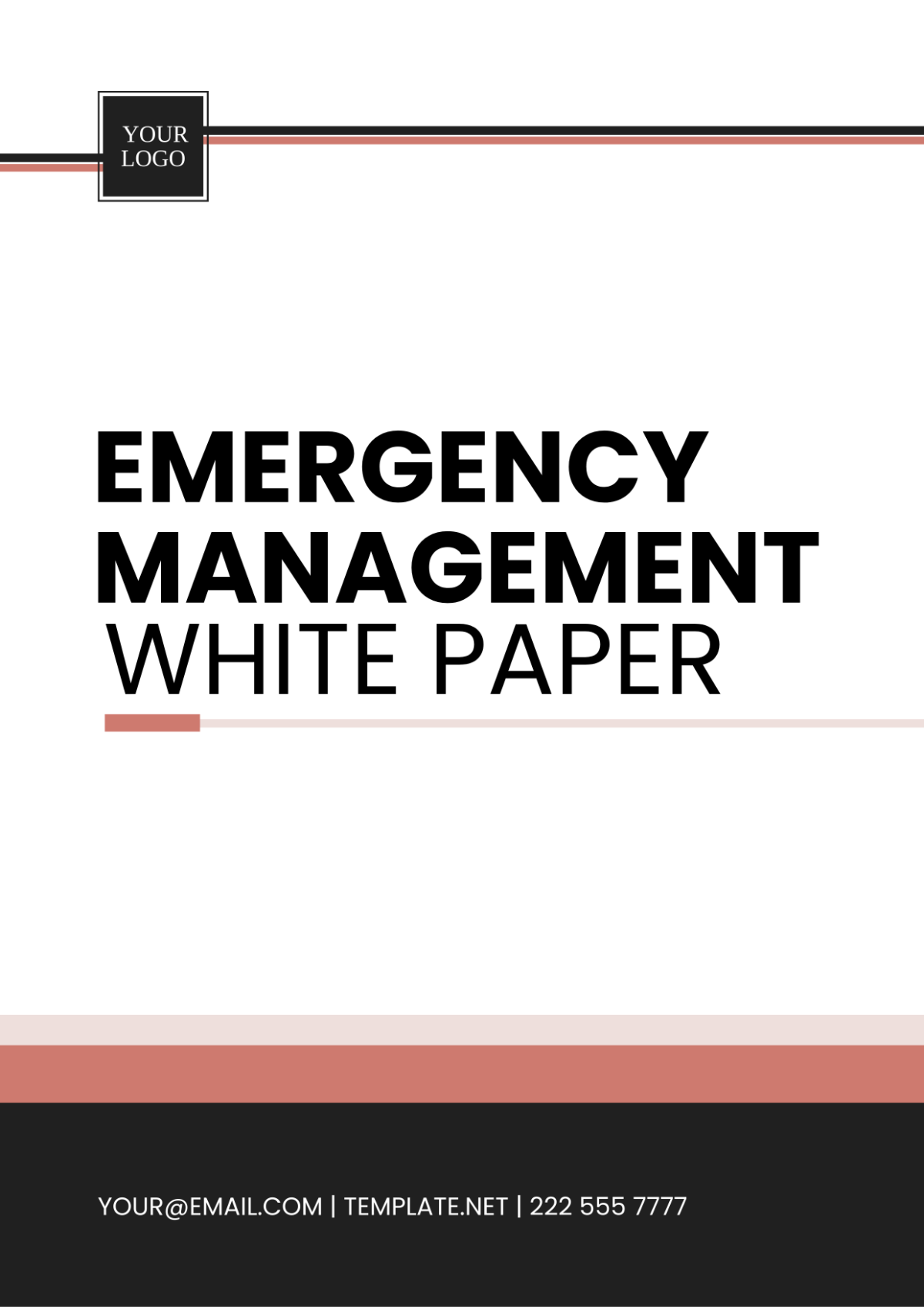Free Emergency Management White Paper

Crisis Communication
Authored by: [YOUR NAME]
Company: [YOUR COMPANY NAME]
Department: [YOUR DEPARTMENT]
Date: [DATE]
I. Introduction
In this white paper, we provide essential guidance on crisis communication strategies and protocols to assist [YOUR COMPANY NAME] during emergencies. Effective communication during crises is crucial for maintaining trust and ensuring the safety and well-being of stakeholders.
II. Understanding Crisis Communication
During a crisis, clear and timely communication is key. Here are the fundamental aspects to consider:

Defining Crisis Communication Crisis communication involves the timely dissemination of information to relevant stakeholders during a crisis or emergency.
Importance of Crisis Communication Effective crisis communication can mitigate damage, restore trust, and guide stakeholders through uncertainty.
III. Key Components of a Crisis Communication Plan
A well-developed and detailed crisis communication plan ought to encompass the following elements:
Risk Assessment Identify potential crises and assess their impact on [YOUR COMPANY NAME].
Stakeholder Analysis Determine key stakeholders and their communication needs.
Communication Strategy Develop strategies for different crisis scenarios, including message development and delivery channels.
IV. Crisis Communication Protocols
Establish clear and well-defined protocols for:
Internal Communication Ensure consistent messaging across [Your Company Name] and guide employee communication.
External Communication Outline procedures for engaging with media, customers, suppliers, and the public.
V. Roles and Responsibilities
Define roles and responsibilities for crisis communication within [YOUR DEPARTMENT]:
Crisis Communication Team Identify team members responsible for communication tasks during a crisis.
Spokespersons Designate official spokespersons and provide media training if necessary.
VI. Communication Tools and Resources
Make use of the following tools and resources:

Tool/Resource | Purpose |
|---|---|
Emergency Notification System | Instantly reach employees with critical updates |
Social Media Guidelines | Ensure consistent messaging on social platforms |
Crisis Communication Templates | Pre-drafted messages for common scenarios |
VII. Testing and Evaluation
Regularly carry out tests and evaluations on the crisis communication plan to ensure its effectiveness:
Conduct tabletop exercises to simulate crisis scenarios.
Gather feedback and refine the plan based on lessons learned.
VIII. Conclusion
Effective crisis communication is essential for [YOUR COMPANY NAME]'s emergency preparedness and resilience. By implementing the strategies outlined in this white paper, [YOUR COMPANY NAME] can maintain transparency and trust with stakeholders during challenging times. Clear and timely communication fosters understanding and reduces uncertainty among employees, customers, and the public. This proactive approach enables [YOUR COMPANY NAME] to navigate crises more effectively and protect its reputation. Embracing these communication principles will strengthen [YOUR COMPANY NAME] ability to manage and overcome emergencies.
About the Author
[YOUR NAME] is an expert in crisis communication with 15 years of experience in [YOUR DEPARTMENT] at [YOUR COMPANY NAME]. For inquiries or further assistance, please contact [YOUR COMPANY EMAIL].
- 100% Customizable, free editor
- Access 1 Million+ Templates, photo’s & graphics
- Download or share as a template
- Click and replace photos, graphics, text, backgrounds
- Resize, crop, AI write & more
- Access advanced editor
Explore the comprehensive Emergency Management White Paper Template on Template.net. This customizable and editable resource simplifies the creation of professional white papers. Effortlessly tailor content to your needs using our Ai Editor Tool. Enhance your emergency preparedness strategy with this versatile template, streamlining your documentation process and ensuring clarity and effectiveness in communicating vital information.





























